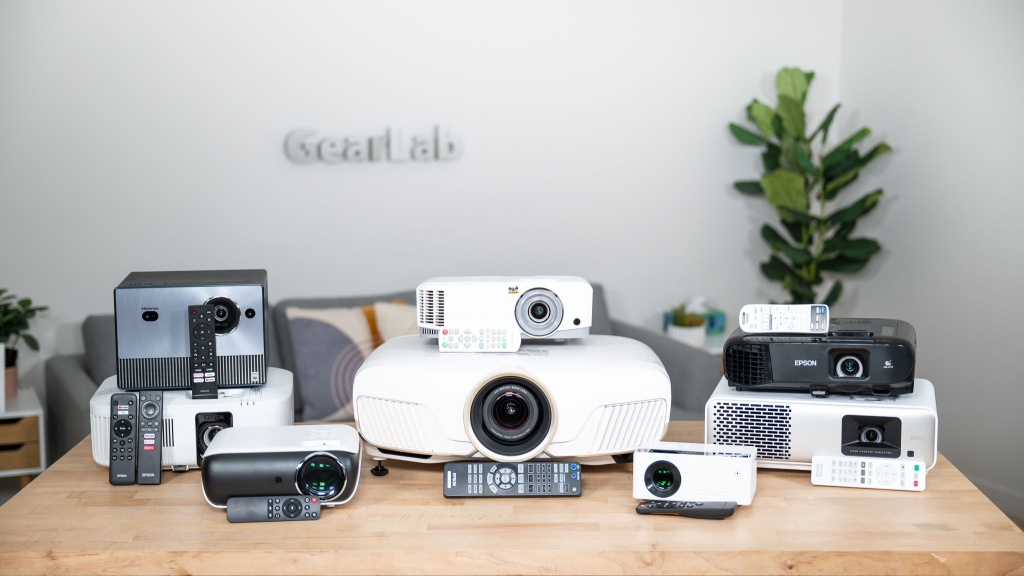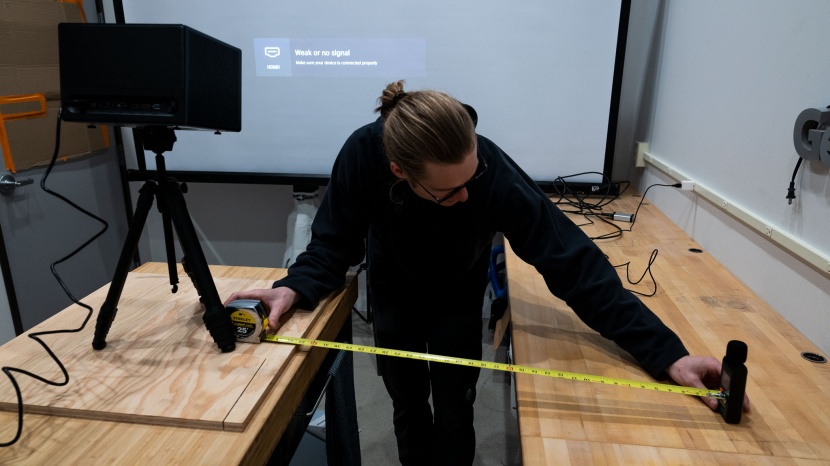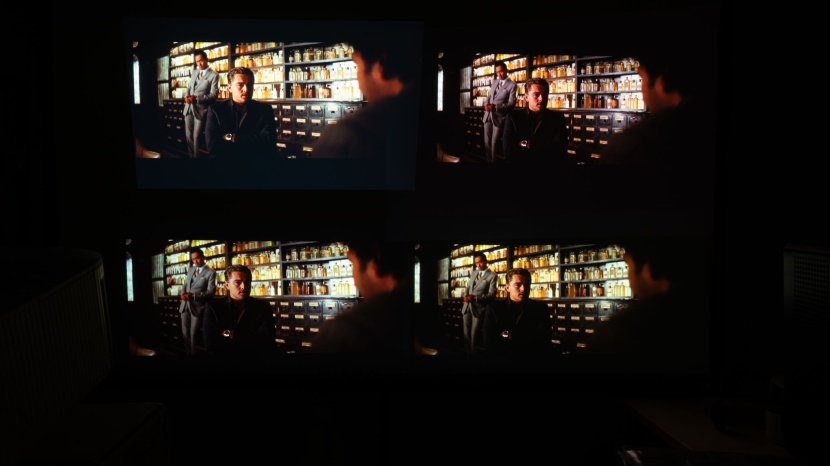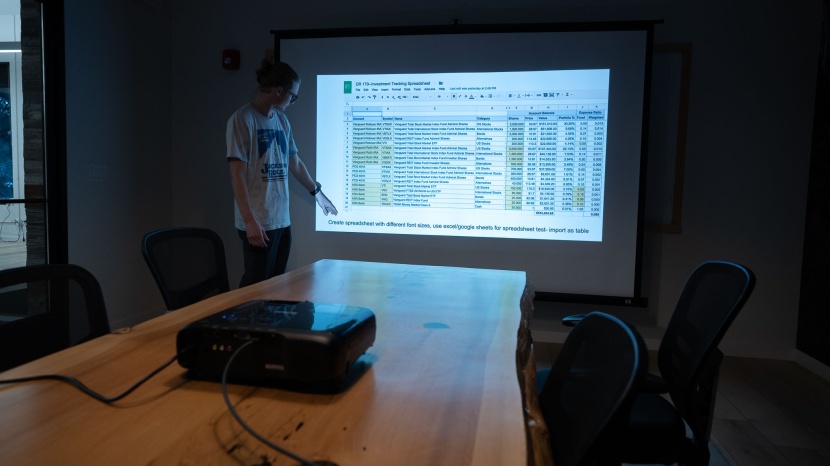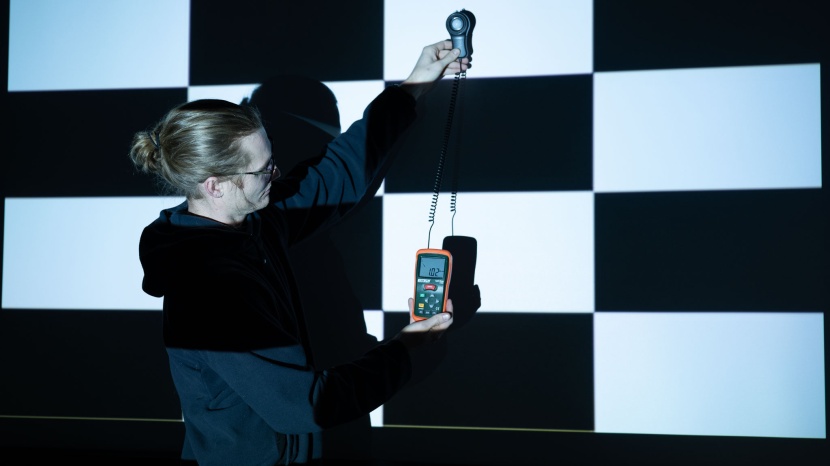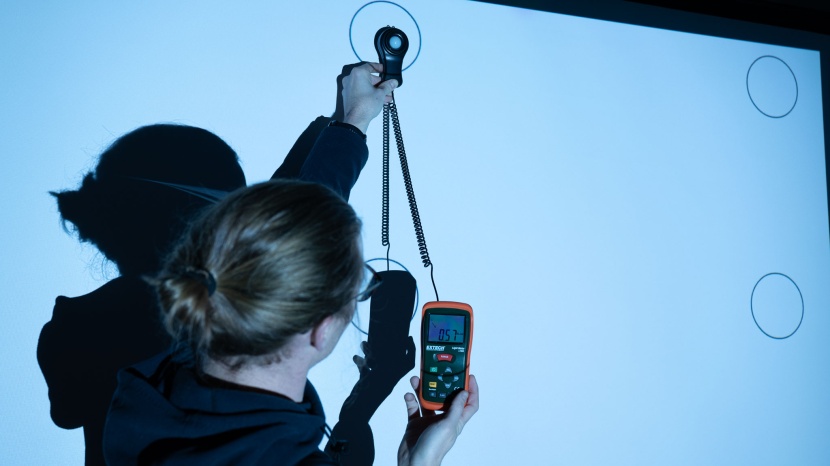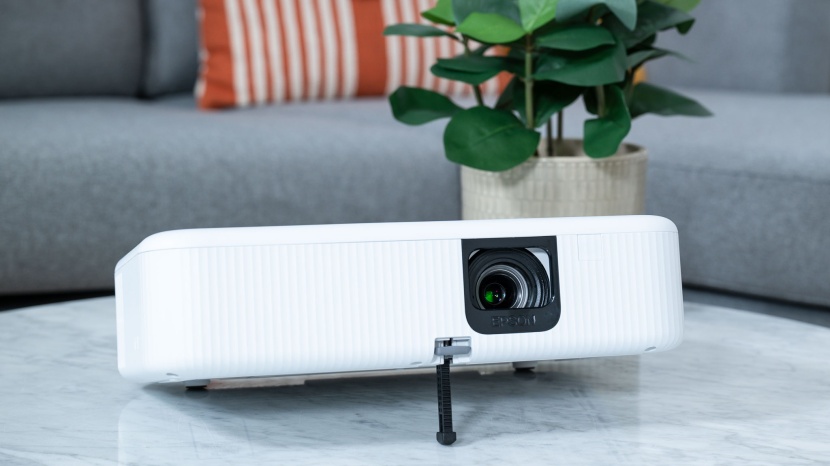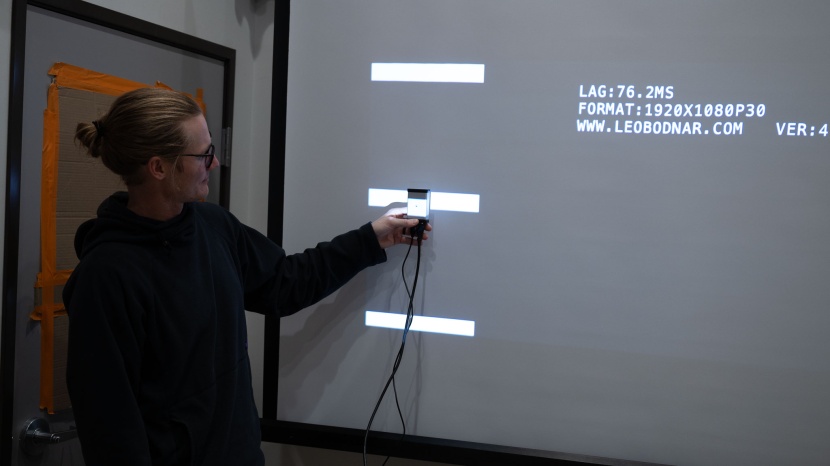We spent a lot of time on our projector testing plan. It seemed the most obvious course was to bring in sophisticated equipment and measure the two big specifications ourselves –– brightness and contrast ratio –– and see how our measurements compared to manufacturer claims. This would give you, our readers, some additional information, as specifications measured with the same equipment by the same people are more comparable than specifications measured by various manufacturers. However, we didn't feel like that alone would get at the essence of the projector experience. As mentioned in our buying advice article, contrast ratio is the go-to spec for representing image quality, but so many different things can affect image quality, including the type of media being projected, the dominant color of the current frame, and how light from the projector is bouncing around the room in the moment. We don't feel that pointing a machine at a black-and-white checkerboard and taking a measurement can really capture all of this. So, in addition to scientific ANSI lumen and ANSI contrast testing, we focused on real-world scenarios, setting up and tearing down, watching movies, and viewing presentations in brighter environments on multiple projectors side by side to determine which ones performed the best in this ultimate projector lineup.
We broke our testing down into six metrics: entertainment, business, contrast ratio, brightness, setup/use, and input lag. These metrics cover the full range of factors that will define your user experience with a projector.
Entertainment
The Entertainment metric is mainly about the picture quality of movies and games, but we also awarded a bonus point to any projector with smart features like native streaming apps, Bluetooth connectivity, and mobile device mirroring.
To score this more subjective test, we set up batches of four projectors at a time with a 4-way HDMI splitter connected to a single source in a dark room. Our go-to movies for testing were Inception and The Martian on Blu-ray, and we did our gaming on the Sony PS5 console. We grabbed the popcorn and our notes and settled in for a few hours worth of pausing and unpausing the movies and games in a variety of scenes as we compared picture quality, jotting down analysis on color, crispness, edge-to-edge clarity, and dynamic range.
Business
While the Entertainment tests were conducted in a dark room, testing for the Business metric was done in a bright conference room setting. To succeed here the best projectors needed to cast bright images, offer good edge-to-edge clarity and legibility for text and spreadsheets, and have ample input/output options for connecting with computers and other devices. Portability (weight and size) and well-placed onboard controls were two other characteristics we emphasized for projectors in this metric; as they are moved from location to location, they must go easily and be operable if their remote control gets left behind.
Contrast Ratio
We found that contrast ratio is the highest contributor to the quality of an image. A narrow ratio loses details in both shadows and bright spots. To test the contrast ratio, we viewed the same slide show and movies on each projector, pausing and zooming in to investigate the details. The first slide of our sideshow exhibits dynamic contrast. Dynamic contrast is the difference between the lightest whites and darkest blacks. We explore the ratio by viewing a white-to-black scale and determining the level of visible difference between each block. Slides two through five introduce colors to help portray a little more versatility, providing more information to the viewer.
We also watch a video touring Costa Rica, which offers a very high level of detail, helping us decern how well the contrast ratio performs when the image is in motion. We pause and zoom in at the same two spots to view a highly textured from and to investigate the level of detail lost, or not lost, in the dark shadows of the lush forest.
Brightness
Brightness was one area that we felt merited taking specific measurements. Brightness is less objective than contrast ratio. Measured brightness is much more directly related to how bright an image will appear than measured contrast ratio is related to how good an image will look.
To make our comparisons fair, we used four projectors at once, all in the same room. This ensured ambient light conditions were consistent across all four projectors. We also projected the exact same photos and video using a high-quality, 4-way HDMI splitter.
We used a light meter to measure ANSI lumens. When measuring, we projected a white screen with nine circles evenly spaced throughout. We measured the brightness inside each one of these circles and then averaged those nine measurements to get an overall brightness figure.
To evaluate ambient light image quality, we used text-heavy PowerPoint slides, graphs, spreadsheets, and high-quality photos. Generally, these are the types of things that pop up during a presentation in a well-lit conference room or small lecture hall. We projected identical slides and images side by side in the same room and compared how easy it was to read text and graphs and how vivid or washed out the photos appeared.
Setup & Use
Over the course of our testing, we were constantly setting up and breaking down each projector over and over and over. This entailed adjusting the leveling legs, dialing in the focus and zoom, using the keystone correction to get a square image, and using the remotes to scroll through menus, adjust the volume, and switch the color modes. We kept careful notes of how simple or frustrating each one of these tasks was for each model and turned those notes into ease of use scores.
Input Lag
We included the Input Lag metric in our testing with gaming in mind. Unless you are online gaming, input lag may not matter much when it comes to projectors, but we still put every unit in the review through its paces with a video signal input lag detector, where we measured the response time on the top, middle, and bottom of the screens, then took the average millisecond response for scoring. We ran each projector at the highest resolution it offered and we used “Game Modes” where available. We were surprised to find that many of the cheapest projectors had excellent response time, even though they had bad picture quality, and we suspect it has something to do with their operating systems having less image processing overhead than the more advanced units.

